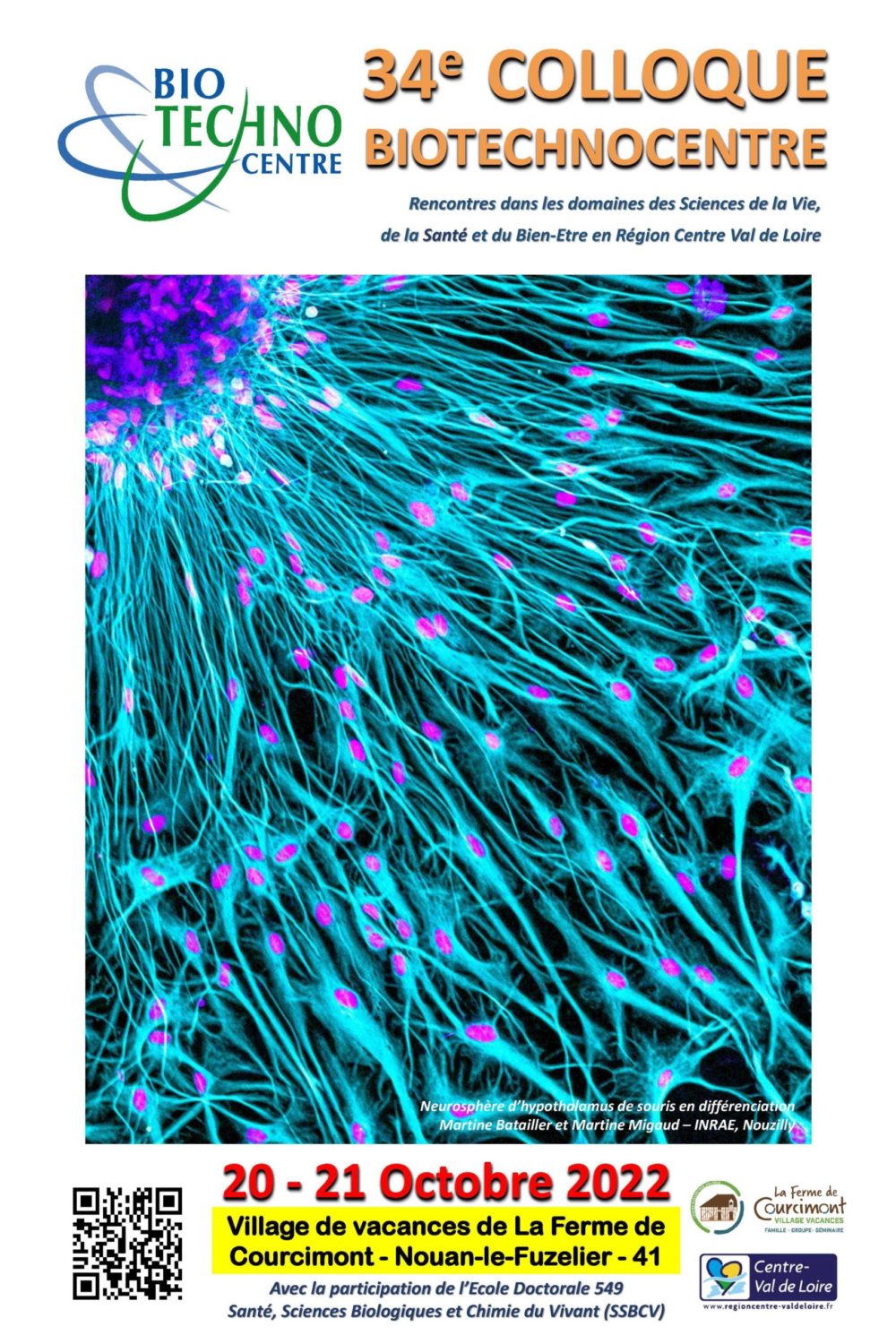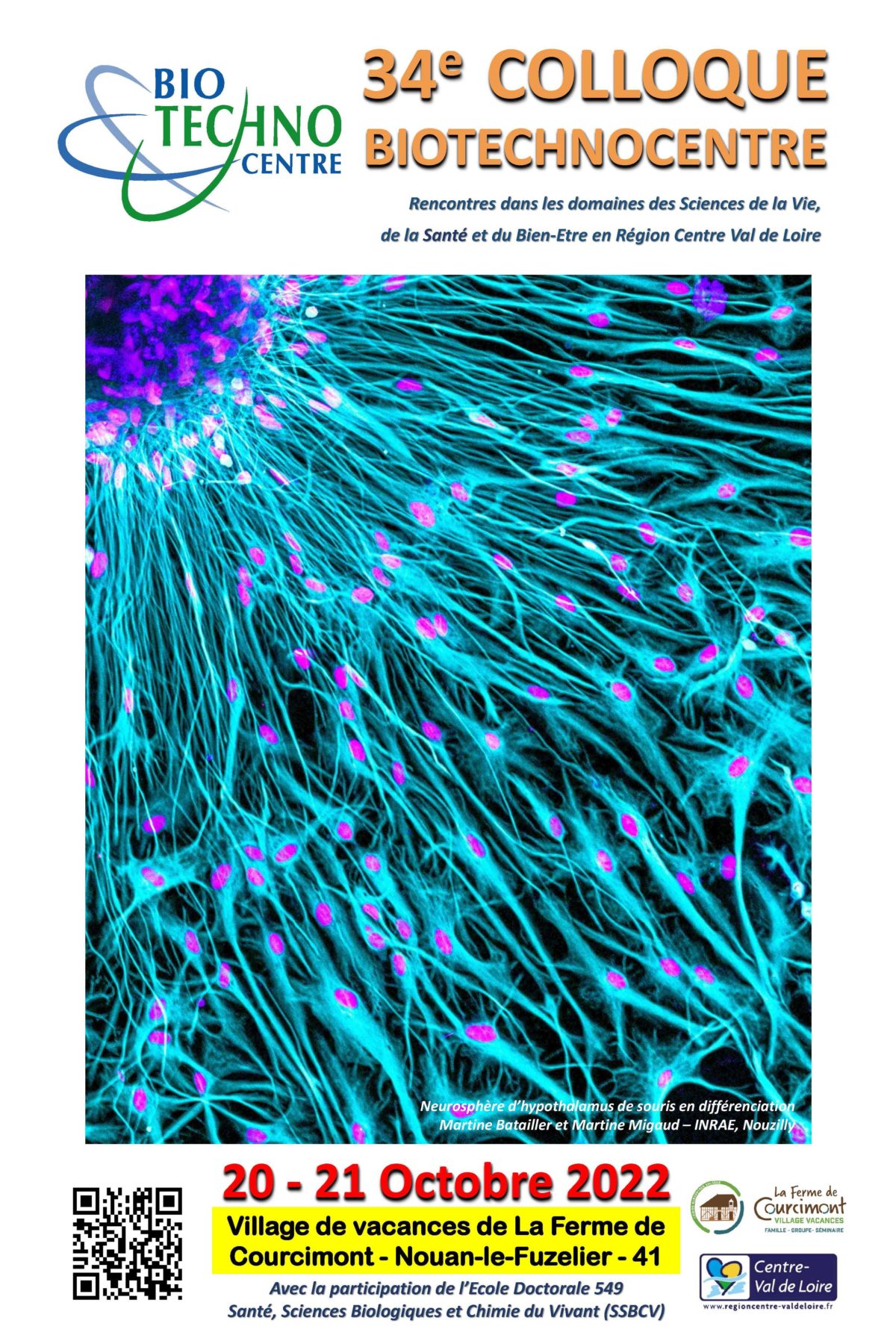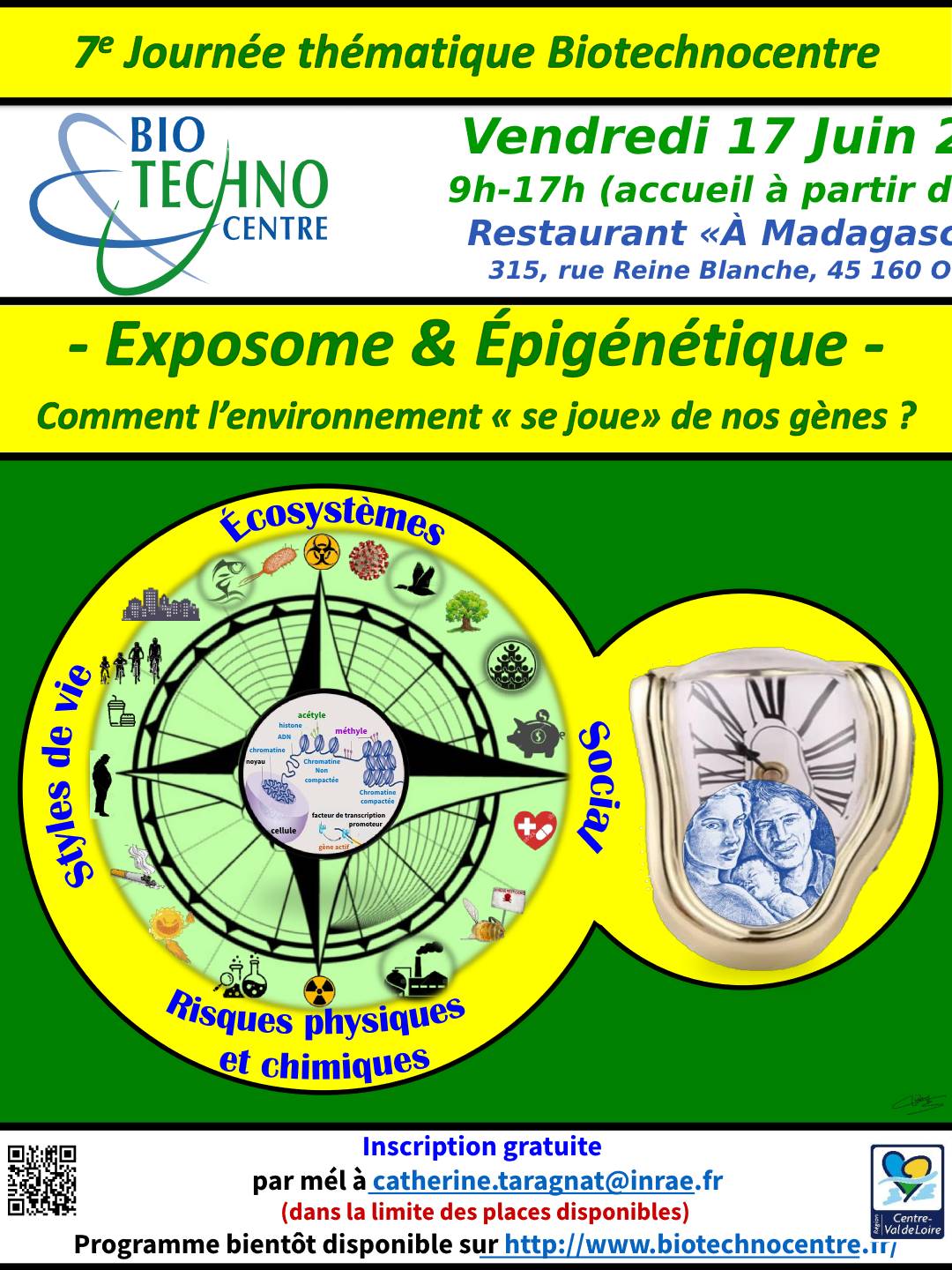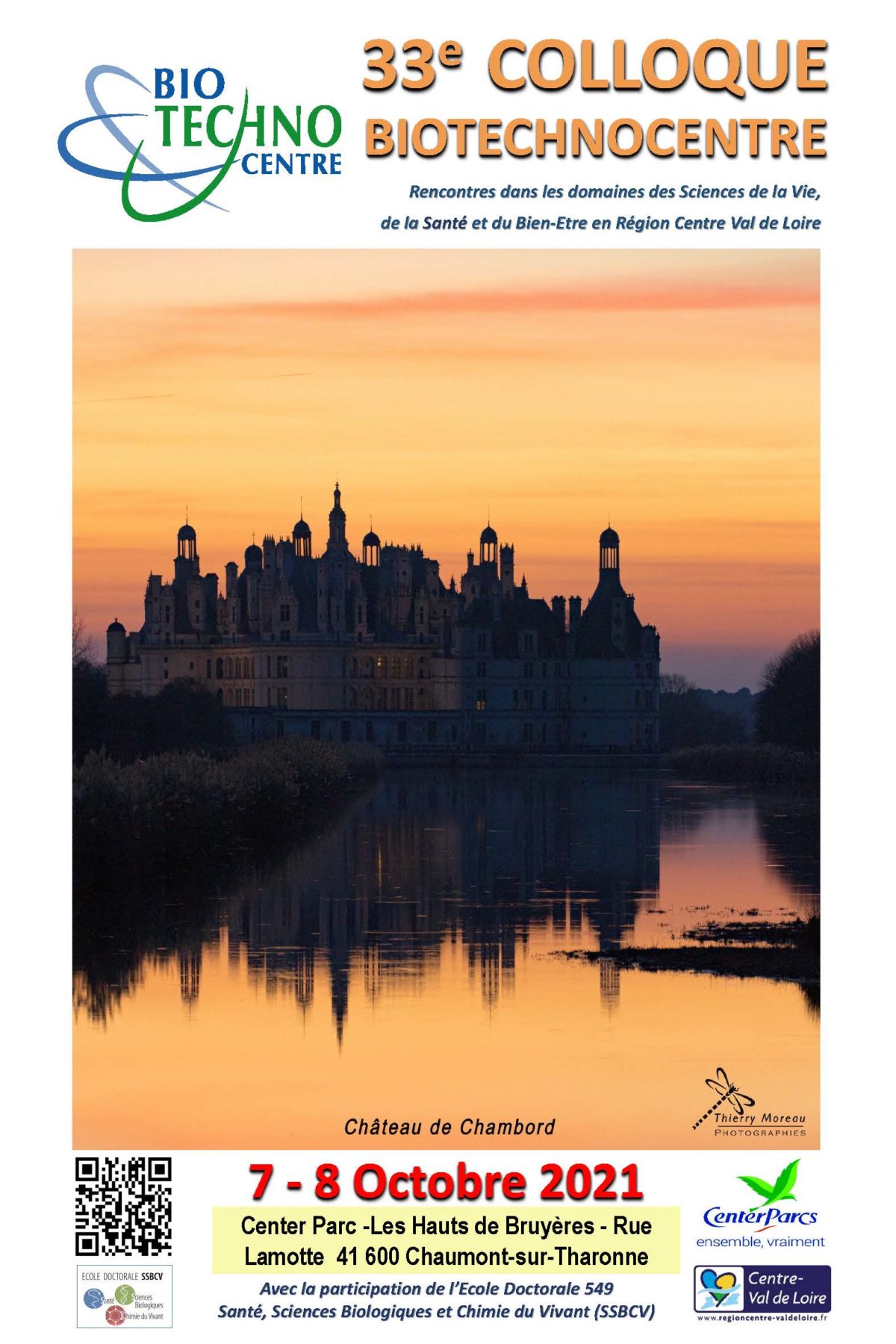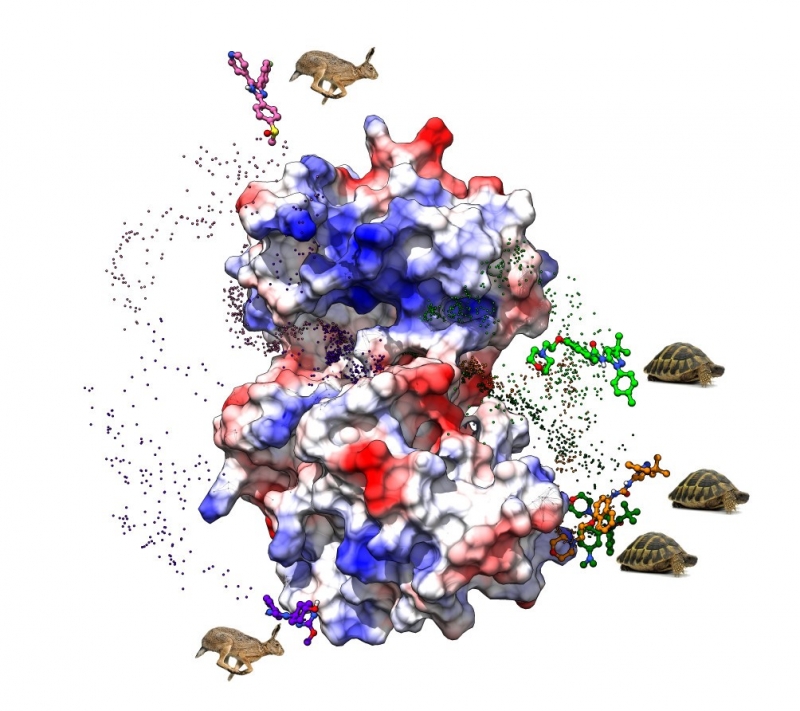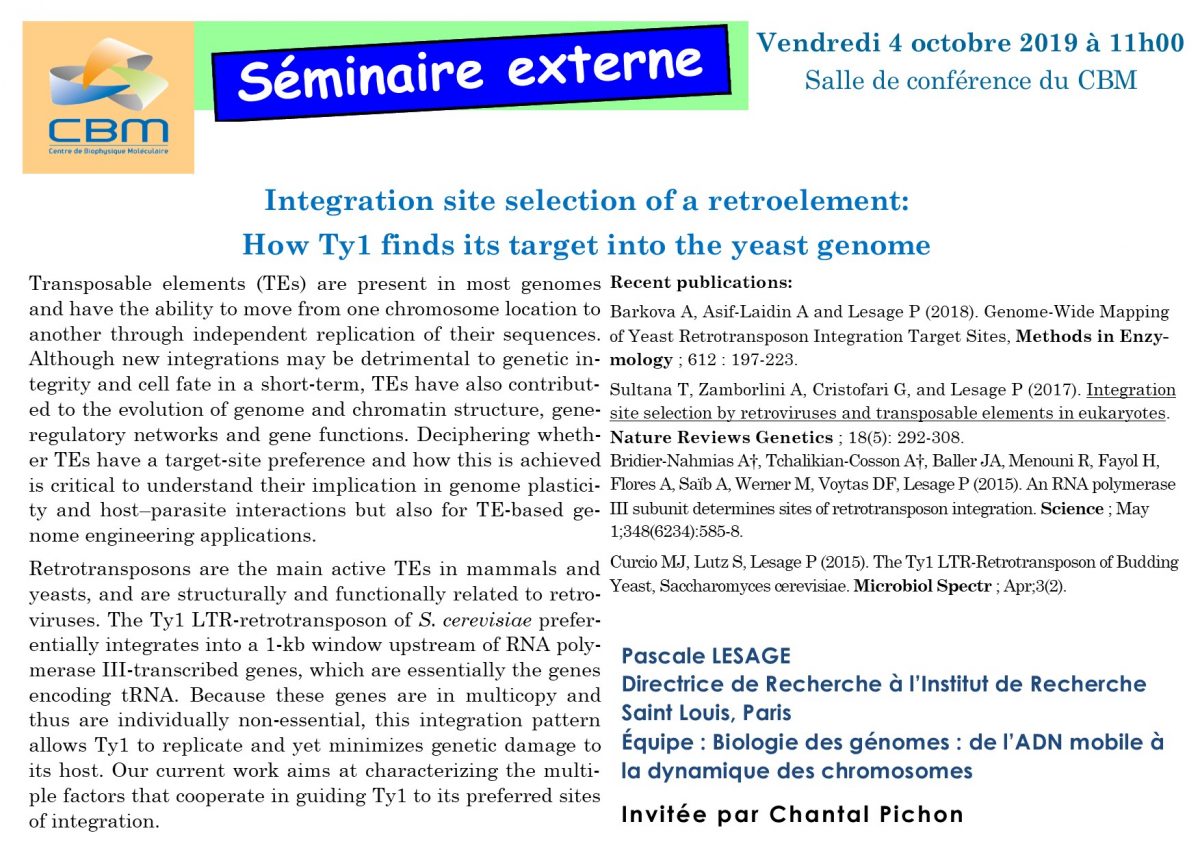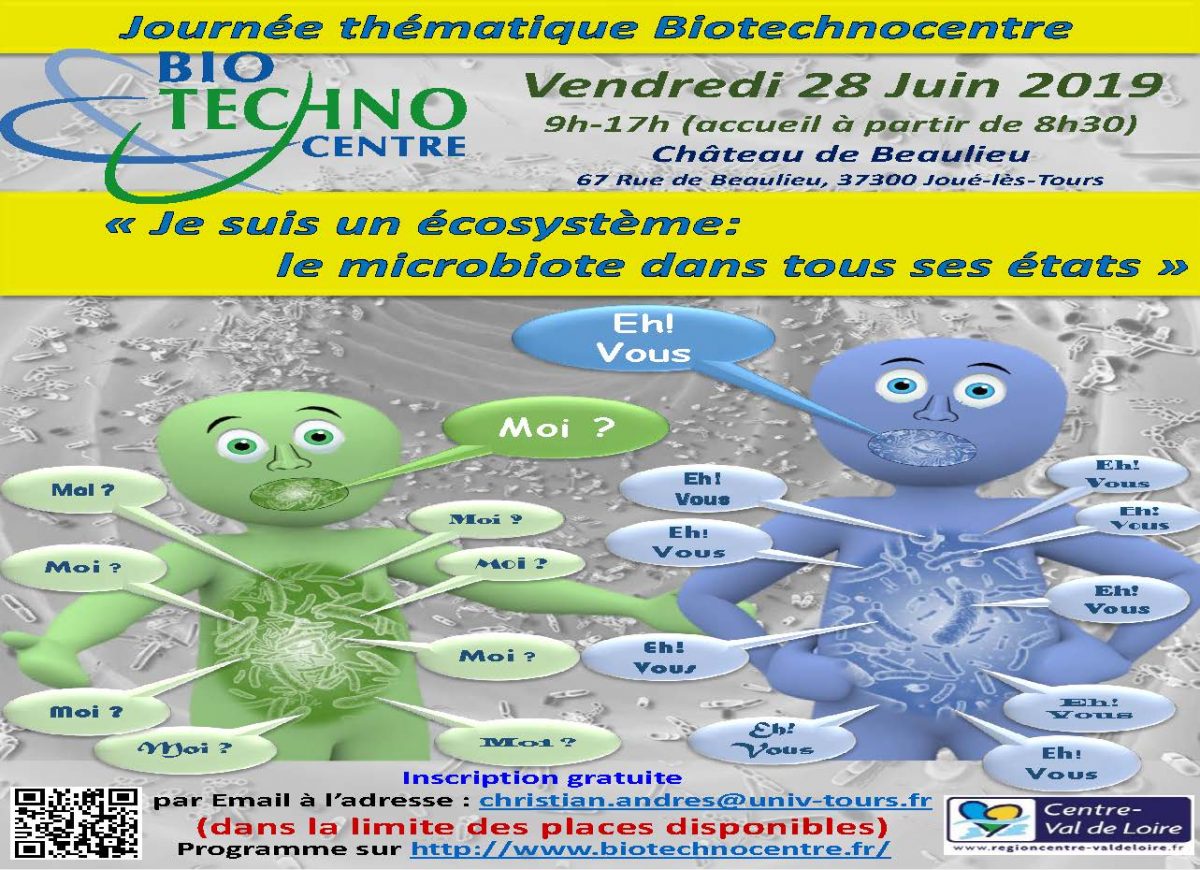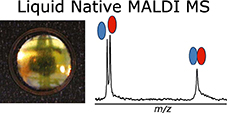The 33rd Biotechnocentre conference will be held on October 20 and 21, 2021 at the Ferme de Courcimont holiday village (Nouan-le-Fuzelier, Loir-et-Cher)
With the participation of Doctoral School 549 "Santé, Sciences Biologiques et Chimie du Vivant" (SSBCV).
Registration form to be sent to biotechnocentre@sfrbefore September 5, 2022.
See the poster and conferences program
